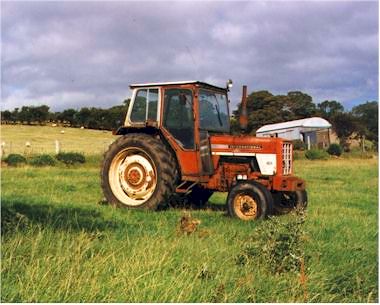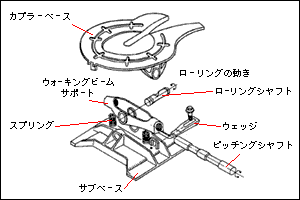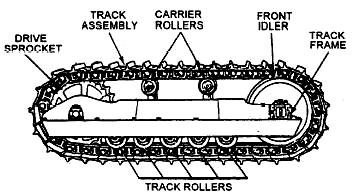From the Brainial Innards of Mr. Dave Bumpkiss

Dave Bumpkiss is an avid tractor maintenance
specialist and author of the one hundred and
twenty-four volume Encyclopædia Tractoria.
He currently resides in his home.

Hello, tractor aficionados. This week we’re going to take a quick trouble-shooting tour of the Halbard-Fillerman GR7 Agricultural Machine. While this is a wonderfully engineered tractor, any highly tuned machine is going to experience some teething troubles when first incorporated into your own farm-equipment family. So, here we go.
? I have noticed that my GR7’s cover-case seems to always be wet, I have replaced the windshield wipers, as called for in the owner’s manual and operator’s guide, but the engine cover-case seems to be often covered in dense moisture.
First of all, check the general surroundings of your GR7. Look at the area, are there fish swimming near by? If the answer is yes, then you are probably underwater. Try the AgroFarm Traqua Mark IV, probably one of the world’s best sub-aquatic tractors. If there are no fish about, then check with your local police station or consulate to see if you live in Bangladesh. Bangladesh has rather horrid weather, especially during the monsoon season. You might try and move to a country with better weather, or if that’s not possible, try to at least move to the Northern Highlands, up in the Naga Hills, perhaps near the city of Sylhet, where the soil is wonderful for growing strawberries.
? Sometimes, I noticed that the left wheel of my GR7 can lock up slightly, making it difficult to keep the tractor in good alignment while tilling my fields. It tends to skew slightly over toward the left. What can I do to fix this.
Make sure you check the undercarriage. Are there any human or animal remains lodged in the axels or the cam-shaft? If you’re riding your tractor down busy sidewalks, you’d be surprised at how many bits of bone can get lodged in your wheels. But, relax, as the problem is easy to solve. Take your handy remains-spatula and gently scrape or prod the jammed housings until the proper alignment is restored. If the wheels are free of debris, yet your tractor still veers to the left or right, check your arms and chest. Make sure you’re feeling no tightness in your chest or difficulty breathing. Is your left arm numb, or are sharp pains shooting down the length of it? You are having a heart attack, which can often throw off your ability to steer. Make your peace with God and then collapse. Be sure to turn off the engine first, you don’t want the unmanned tractor driving into any dangerous obstacles!
? On cold mornings, my GR7’s ignition system is slow to engage. What can I do to remedy this?
First, check the headlights. Are they normal, or are they glowing ominously red? If glowing, it is possible that your tractor is possessed by a demon or other angry spirit. Does your tractor constantly spew forth hateful and disturbing anti-Semitic speeches in German? If so, then Hitler’s ghost is probably possessing your tractor. Either way, a simple exorcism should clear things right up. Halbard-Fillerman makes a great exorcism kit specifically for the GR7, you can pick it up at your dealer. Don’t worry, it’s covered in the warranty. If your tractor is not possessed, or if after exorcism the slow start up still occurs on cold mornings, you should try and get many countries to loosen up their industrial emissions laws. That should increase the amount of CO2 in the atmosphere, creating a sort of “greenhouse effect” that will blanket the Earth in a comforting warmth, eliminating cold mornings, and their negative effect on your tractor’s performance.













